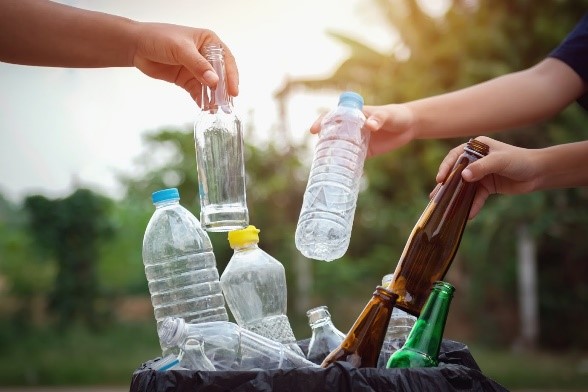The recycling industry helps to provide valuable jobs in many communities, but its most important task is to help the environment. Recycling reduces landfill usage and pollution and lowers energy use and the need for raw materials during production. Recycling efforts continue to grow, but communities can often do much more.
According to National Geographic, people throw out as much as 91 percent of plastic rather than recycle it. A better understanding of consumer waste and how recycling works may help communities make good decisions regarding their recycling efforts. Awareness of waste streams and how to manage them are an important part of the effort.
What Is a Waste Stream?
A waste stream is the path taken from where a specific item becomes waste to where it finally ends up. Waste streams could begin at a residence, a business, or an industrial area. The end location of the waste stream could include a landfill, a recycling facility, or a facility where treatment takes place to break down or make materials less hazardous for its final disposal.
What Types of Waste Streams Exist?
Waste stream types and paths can vary from one municipal area to another based on the items the community has and the resources available to collect and recycle. Common streams include metal, paper, cardboard, glass, and plastic. Some communities have treatment facilities for bio-waste and some recycling plants may offer wood or textile recycling.
Electronic waste, vehicle waste, and construction waste may need a more complex waste stream path than smaller and more easily recycled items. Third-party organizations may collect and remove these items from the community for recycling elsewhere. The benefit of using third parties is that they make it possible for smaller towns to get closer to zero waste goals.
Zero waste efforts have different outcomes in different communities. Many communities have adopted these types of goals to encourage residents and businesses to use less, to recycle and reuse more, and to become more efficient with their resources. Including additional waste streams helps to make local zero-waste recycling goals more attainable.
Why Does Waste Stream Management Matter?
Waste stream management ensures that the handling of the items flowing through the stream happens correctly. Incorrect handling, storage, and disposal can cause environmental damage or harm to people where recycling occurs. Improper management can ruin recyclable goods and make workers within the industry less safe.
Vehicle recycling, for example, must include efforts to protect people and the environment from the toxic materials inside each automobile. Oil, gas, other fluids, and mercury-containing switches in older vehicles can cause pollution to soil and water. Proper waste stream management ensures that the toxins stay contained so no harm occurs during recycling.
Waste stream management also helps to prevent contamination of recycled goods. The wrong plastic could contaminate a batch of other plastic waste. Hazardous materials could make recycling the other materials in a bin impossible and make the bin unsafe to handle. Some materials damage sorting equipment and cause unnecessary expenses at the facility.
The presence of inappropriate items in a recycling batch may devalue a load. Recycling is about the environment, but communities still need to cover the cost. Reports from the Environmental Protection Agency (EPA) show that recycling often costs less than trash removal, but citizens may complain if the costs of recycling increase once programs begin.
Corporations, municipalities, and small businesses can underestimate the effort needed to comply with local regulations or to live up to their recycling promises. At Cleanlites, we can help you identify the specific waste streams your organization needs and help you keep it all effectively managed. Contact us to learn more.

